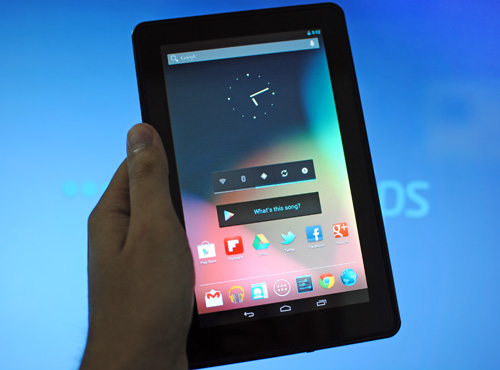Install Android 4.1.1 Jelly Bean AOSP ROM On Amazon Kindle Fire
Amazon Kindle Fire owners, we’ve got some great news for you. If you have been waiting to get Android 4.1 Jelly Bean on your device since the latest version of Google’s mobile OS was announced a couple of weeks ago at Google I/O 2012, your wait is over, as an almost fully working port of Jelly Bean based on AOSP code is now available for you to install on your tablet. More information after the break.

When Google pushed the Android 4.1 Jelly Bean source code to AOSP (Android Open Source Project) just a couple of days back, the Android world started expecting custom ROMs for all sorts of devices pretty soon, and amongst the first to get one was the Amazon Kindle Fire, thanks to XDA-Developers recognized developer Hashcode.
Despite some minor glitches, the port seems to be working well enough for use by many, based on the response received at the XDA thread. Let’s take a look at the issues and glitches present at the moment.
Current Issues:
- HD codecs are not working at the moment due to the lack of proprietary graphics drivers compatible with Jelly Bean. Apps like YouTube and Netflix that rely on HD video playback codecs will therefore not work, at least when it comes to playing videos in HD. However, Texas Instruments is working on updating the proprietary drivers of the chipset for compatibility with Jelly Bean and should release them soon. Once the required drivers/libraries are available, this issue will be fixed on priority.
- The screen over-rotates when you change the position from portrait to landscape or vice versa. The issue will be patched in a later release.
- USB Mass Storage doesn’t seem to be working at the moment. You will need to use ADB or an ADB-based PC/Mac app (like our previously featured Android Commander) for your file transfer needs.
- Wi-Fi isn’t working by default but a quick fix using ADB is included and provided with the method. This issue will also be resolved in a future update, and the fix will no longer be required.
The rest should be working fine, though being a beta release, there may be some unexpected or undocumented issues. If you run into them, help the development by reporting them at the XDA-Developers forum thread using the ‘via’ link at the end of this post.
Disclaimer: Please follow this guide at your own risk. AddictiveTips will not be liable if your device gets damaged or bricked during the process.
Have enough information and want to get Jelly Bean up and running on your Kindle Fire? Let’s do that!
Requirements:
- Rooted Amazon Kindle Fire with a custom recovery (like TWRP) installed.
- Android 4.1.1 Jelly Bean AOSP ROM for Kindle Fire by Hashcode
- Google Apps package for Jelly Bean
Procedure:
- Download the ROM from the link given above and transfer it to your device.
- Reboot your tablet into recovery.
- It is always a good idea to perform a full backup from recovery before flashing any new ROM, so do that if you want to make sure you can revert back to your current ROM if anything goes wrong.
- Wipe data, cache and dalvik cache using the options given in recovery.
- Now flash the ROM itself, and don’t reboot yet after flashing it.
- After flashing the ROM, also flash the Google Apps package.
- Finally, reboot the device.
Wi-Fi Fix:
Once you have flashed the ROM, you can get Wi-Fi working with just a few steps. The method requires you to have ADB working on your PC so if you don’t have it already, get it by following our ADB installation guide. Once you have ADB up and running, here are the steps to fix Wi-Fi:
- Make sure Settings > Developer Options > USB Debugging is enabled on your tablet.
- Connect your tablet to your computer via USB.
- Open a command prompt window and enter these commands:
adb shell su fix-mac.sh
- Your Wi-Fi is fixed now. Feel free to close the command prompt window.
There you go, you should now have AOSP based Android 4.1.1 Jelly Bean up and running on your Kindle Fire. Enjoy!
